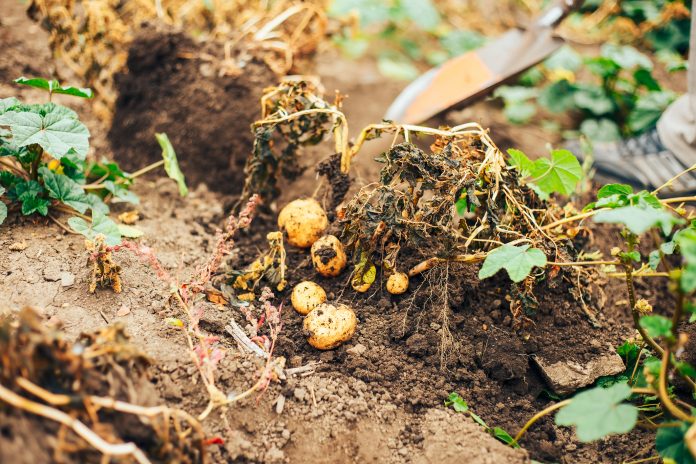Aarthi Janakiraman, Industry Manager, Chemicals and Advanced Materials at TechVision, Frost & Sullivan, shares her thoughts on the popular potato crop, as well as the potato blight (both early and late) which remains a major threat to production
Potato is currently ranked fourth among the staple food crops after maize, rice and wheat. Its short growing cycle and climate adaptability have made it into a crop that is spread geographically from its South American origin, with Europe and UK still prominent despite increasing participation of growing economies, such as China and India. Despite varying opinions towards its health benefits and nutritive value, it can’t be denied that the crop is highly marketable, be it as a raw tuber or in the form of processed food products, animal feed ingredient, even as feedstock for biofuel generation. Its global importance is non-debatable and so is its role in overcoming food shortage issues.
Despite differences between the potato industry in Europe and UK, especially towards the intended market for the crops, (European nations tend to focus more on the processing industry), challenging planting conditions, health of the crops due to possible droughts and diseases are the key concerns of growers, be it in European mainland or the UK. The last two to three seasons have seen fluctuations in production, pricing and even arable land. Apart from the usual suspects of harsh growing conditions and fieldwork difficulties, the influence of climate change can no longer be denied and its effects esp. towards availability of ample water to irrigate are to be felt in the 2019 growing season.
Potato blight (both early and late) remains the major threat to production, with worldwide crop losses estimated to be in excess of £3.5 billion. Studies have indicated that farm blight management can account for as much as half of the total cost of potato production. The possible adverse effects combined with already challenging conditions has made it imperative for growers not only to control but also prevent blight occurrence. The current fungicides are effective for a shorter span of time and growers incur not only the economic cost but also environmental costs. However, the use of locally systemic and translaminar fungicides is still necessary for control of blight. Identification of blight strains resistant to fungicides is a high possibility and this year has seen two blight strains, 37_A2 and 36_A2, being confined not only to the UK.
This scenario has established the need for careful selection and rotation of fungicides with varying modes of action and also prevents early blight from building further resistance. The importance of integrated disease and pest management solutions are required to provide growers not only details about weather forecast conditions, but also information about disease prevention and intervention. Real-time sensing and monitoring that will provide data about localised conditions and other factors, such as irrigation can be integrated with weather forecasting models to provide a holistic real-time model to predict blight occurrence.
Various research studies are underway that explores various methods to address the blight issue. Apart from developing effective fungicides, the feasibility of introducing genetic resistance to crops is being explored. There are many challenges to address, especially the deployment of genetic resistance using conventional breeding techniques. While still in nascent stages, the approach, if fruitful, can reduce the need for commercial spraying. Also, sources of resistant genes are also difficult to find; researchers are also investigating the development of viable real-time sequencing techniques.
The industry should also focus on improving soil health to ensure nutrient bioavailability and mimimse the effects of drought and salinity. Post-harvest storage conditions also need to be prioritised, as it not only to reduce crop losses but also plays a significant role in determining end-product processing quality. Initiatives such as that of AHDB’s one-to-one storage advice can go a long way in minimising storage losses.
Research initiatives are also focused on increasing the nutritional quality of potatoes, especially protein, vitamin, phenolic and carotenoids content and even though no major anti-nutrient contents are being reported, reduction of the percentage of steroidal glycoalkaloids (SGAs) is also of interest CRISPR/Cas9, TALENs and ZFNs can help expedite gene editing of the tuber and offer precision while saving time. Knowledge about the genome sequence will facilitate in identifying genes that are useful for improving agronomic traits, nutritive value and enhance disease resistance.
With the processed food industry already focused on food safety and ensuring “clean label”, addressing challenges during production and storage can close the loop and help to ensure the growth of the potato industry. Closer working relationship with all stakeholders, right from growers to academia and industry associations to companies across the value chain can help in not only providing a platform to address challenges and explore solutions but also help in testing and rapid deployment of the same.
Acknowledgement
I thank the TechVision Group at Frost & Sullivan who helped in providing insights for this article.
References
Hameed, Amir et al. “Applications of New Breeding Technologies for Potato Improvement.” Frontiers in plant science vol. 9 925. 29 Jun. 2018, doi:10.3389/fpls.2018.00925.
John Innes Centre. “New technique accelerates isolation of potato late blight resistance genes.” ScienceDaily. ScienceDaily, 25 April 2016. www.sciencedaily.com/releases/2016/04/160425141544.htm
Mehi Lal, Sanjeev Sharma, Saurabh Yadav and Santosh Kumar (June 6th, 2018). Management of Late Blight of Potato, Potato – From Incas to All Over the World, Mustafa Yildiz, IntechOpen, DOI: 10.5772/inte- chopen.72472. Available from: https://www.intechopen.com/books/potato-from-incas-to-all-over-the-world/management-of-late-blight-of-potato
Mitchell J. Bauske, Postdoctoral Research Fellow, Department of Plant Sciences, NDSU Andrew P. Robinson, Assistant Professor and Extension Potato Agronomist, NDSU/University of Minnesota Neil C. Gudmestad, University Distinguished Professor and Endowed Chair of Potato Pathology, Department of Plant Pathology, NDSU, Early Blight in Potato. Available from: https://www.ag.ndsu.edu/publications/crops/early-blight-in-potato
Aarthi Janakiraman
Industry Manager, Chemicals and Advanced Materials
TechVision, Frost & Sullivan
Tel: +91 44 6681 4102











